Thesis Capstone 2025

Art by Emily Poulis
Welcome to the Graduate Exhibition and Experience Design Thesis Capstone 2025!
The adjudication of the students' work will take place in person on Dec 12th with
a celebratory Evening Reception 5-7pm.
Exhibition and Experience Design 2025 MA Candidates
Click the green menu button at the top right of this page for more information.
Carrie Mendoza
Thesis and Project
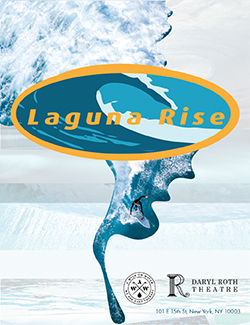
Designers can design immersive, social spaces that support people with unapparent disabilities (neurodivergence, cognitive challenges, mental illnesses), spaces that don’t ask for explanation or apology, but instead create room for comfort, autonomy, and joy. You can’t always see someone’s limits, and environments aren't typically built with inclusivity of this type in mind. Through play, experimentation, and exposure to designed alternative therapies, visitors can experience environments where everyone can show up fully without having to shrink themselves to fit.
Client: A Walk on Water
Venue: David Roth Theatre, 101 E 15th St, New York, NY 10003
Audience: Preteens and their families
Claire Ongaro
Thesis and Project
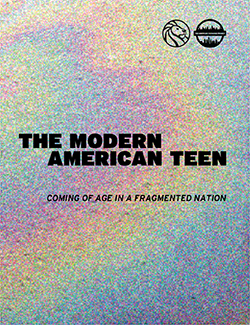
Across all regions, individuals collect shared human experiences. Empathy—the capacity to understand and share another's experience—is the tool that blurs the boundary between self and other, helping us see our lives as intertwined. Empathy has been widely studied across disciplines, including psychology, sociology, and education. In exhibition and experience design, it holds potential to dissolve binary thinking and surface more nuanced or alternative narratives.
Through the lens of the urban-rural divide, this thesis investigates how exhibition designers can apply the Torrance Tests of Creative Thinking (TTCT) to activate empathy.
Client: American Exchange Project
Venue: The New York Public Library, Gottesman Exhibition Hall
Audience: Teenagers / high school students, parents / educators, elected officials/ organizations interested in bridging the urban-rural divide
Emily King
Thesis and Project
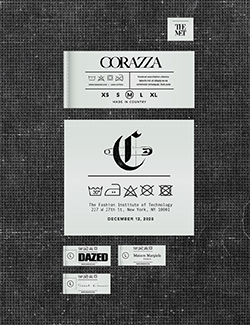
Womanhood has never fit neatly into one definition—across cultures and centuries, it has meant many things to many people. So why do we continue to demand a singular, fixed version of it today? This is not a study of identity rooted in biology, but in perception, inheritance, and the power of belief—what we are told to be, and what we choose to become. It traces the narratives passed down through culture and family— myths of womanhood we internalize—and the personal stories that break those myths open. It exposes womanhood as a site of control and resistance defined by culture, distorted by systems of power, and reimagined through lived defiance. By amplifying voices that have been both celebrated and silenced, and interrogating the rigid binaries that divide us, this work reimagines gender as a spectrum of power, expression, and self-determination. It is a call to dismantle the boxes we’re placed in, and to live beyond them, in all the complexity and power of being fully human.
Client: Dazed Magazine, Maison Margiela
Venue: The Metropolitan Museum of Art Exhibit 899
Audience: The Curious and Questioning: Open-minded observers turned participants, they are willing to unlearn inherited myths of gender, power, and identity to see the world through a new lens.
Nonbinary and Gender-Expansive: Existing within, beyond, or alongside womanhood, they embody gender as a fluid, performative act of expression, perception, and self-determination.
Those Who Resist the Binary: Refusing confinement to rigid definitions, they embrace gender as a fluid spectrum—a personal and liberating act of continual reimagining.
Emily Poulis
Thesis and Project
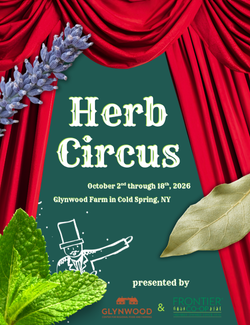
The most memorable experiences don't just pass through time, they shape how time is felt, perceived, and remembered. This research positions exhibitions as a time-based medium, exploring how embodied tactics like movement, sensory shifts, and curated intensity can influence visitors' state of mind, guide attention, and heighten emotional engagement. By understanding time as both a design material and a perceptual factor, this work helps designers craft dynamic, ethically grounded experiences that sustain curiosity, balance excitement and calm, and leave visitors with vivid, lasting impressions.
Client: Frontier Co-op
Venue: Glynwood Farm (Coldspring, NY)
Audience: Primary: Food and culinary enthusiasts
Secondary: Wellness and community seekers
Tertiary: Nature and art lovers
Gianelle Leger
Thesis and Project
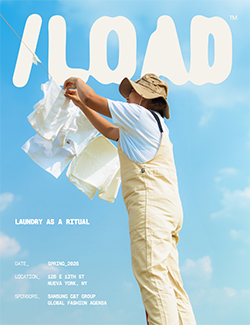
Our tendency to consume is often driven by the allure of status or the pursuit of novelty. These impulses, while human, are also socially and economically conditioned. Rather than reinforcing these patterns, this thesis proposes a shift: from valuing objects as symbols of success to valuing the experience of living with them. It argues that fulfillment does not lie solely in the thrill of acquisition, but in the quiet, evolving relationship between a person and an object over time. By reframing the purpose of consumption, this work seeks to cultivate emotional depth, presence, and attachment in human-object relationships. The goal is to encourage a more intentional and mindful consumer culture that prioritizes meaning over materialism. When design emphasizes process, use, and ritual instead of speed and status, it welcomes products to resonate on a deeper emotional level. This approach envisions a future where products are not disposable markers of identity, but lasting companions in the rituals of everyday life.
Client: Samsung C&T Group + Global Fashion Agenda
Venue: 128 E 13th St New York, NY 10003
Audience: Primary: 18 - 25+ | Young individuals embarking on a journey of self-discovery through
downsizing, redefining, or transitioning into a new phase of life.
Secondary: 25 - 45+ | Conscious consumers who are financially established enough to
actively shape their personal identity and lifestyle.
Harun Kaynar
Thesis and Project
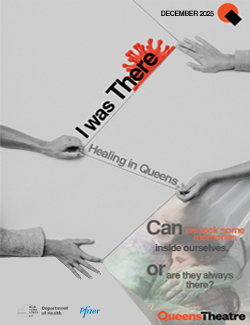
The COVID-19 pandemic revealed the fragility of collective memory and deepened experiences of isolation, loss, and uncertainty, generating an urgent need for spaces that facilitate emotional processing and communal reflection.
Through exhibition design, the project envisions a reflective and participatory framework that transforms pandemic-induced fragmentation and disconnection into opportunities for recognition, empathy, and collective healing. Framing memory as a fluid and relational process, immersive environments and interactive platforms reposition the pandemic as a living archive continually reshaped by personal narratives and shared acts of resilience, thereby redefining exhibition spaces as dynamic environments that cultivate emotional engagement, foster dialogue, and reconstruct collective identity in the aftermath of crisis.
Client: NYS Department of Health
Venue: Queens Theater
Audience: Primary: Queens residents and multigenerational families
Secondary: Students and educators
Tertiary: Tourists and visitors
Isabelle Morin
Thesis and Project
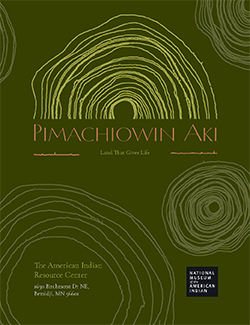
I am exploring how parks and land conservancies can move beyond symbolic land acknowledgements to foster deeper, more collaborative relationships with the Indigenous communities whose land they occupy. Through placemaking, interpretive design, and the intentional use of narrative, I aim to reimagine how these spaces can reflect Indigenous presence, values, and environmental knowledge in ways that resonate with land organizations, visitors, and Indigenous communities alike.
Client: Smithsonian National Museum of the American Indian
Venue: The American Indian Resource Center in Bemidji, MN alongside Diamond Point Park
Audience: Minnesota white, non-Hispanic families 35-54 years old, Local Ojibwa residents, and Bemidji University Students
Juwon Choi
Thesis and Project

It’s not out there. It’s in you.
In contemporary society, people pursue satisfaction through consumption, achievement,
and constant stimulation, yet they become trapped in a repetitive cycle of reward
and emptiness.
Drawing from neuroscience, psychology, and existential philosophy, this thesis argues
that genuine meaning and balance must be cultivated within rather than sought through
external validation. Through game-based interaction and multisensory spatial experiences,
the exhibition visualizes the body’s invisible biochemical signaling system, allowing
visitors to learn how neurochemical messengers influence and interact to shape emotion
and behavior.
By participating in immersive scenarios, visitors recognize how these responses affect
their emotional states, learning to regulate them and restore inner equilibrium. Ultimately,
the exhibition encourages individuals to pause, recalibrate, and realize that control
and contentment begin within, positioning exhibition design as a cognitive tool for
emotional balance and self-regulation.
Client: Wellcome Collection
Venue: Brooklyn Museum
Audience: Adults 25 to 40, navigating emotional imbalance despite external success.
Lauren Raleigh
Thesis and Project
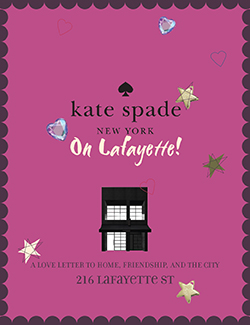
As traditional retail models decline, brands face a need to create deeper, more emotionally
resonant connections with consumers. This thesis proposes the concept of Brandom,
a framework that merges brand and fandom, to explore how the passion, identity, and
community seen in sports and entertainment fandoms can be cultivated within brand
experiences. This research investigates how ephemeral environments such as pop-ups
and temporary retail spaces can generate lasting loyalty.
Ultimately, Brandom aims to provide exhibition and experience designers with strategies to transform audiences from passive consumers into active participants and advocates, shaping the future of retail through emotionally charged, community-driven design.
Client: Kate Spade
Venue: 216 Lafayette St
Audience: Women, 20 – 35
Lindsay Eiseman
Thesis and Project
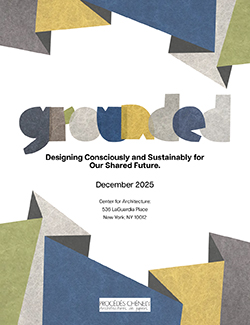
Sustainability is no longer seen as just a trend, but a vital necessity for both humanity and the Earth we live on. It has been over half a century since the first Earth Day in 1970, and more than two decades since Cradle to Cradle revolutionized the thought that end products should not end in a grave. While we now have tools like modular materials, frameworks like the Living Building Challenge, and circular design systems, we are choosing not to use them, or in the correct manner. Too often, sustainability is seen as a checklist rather than a necessity. This thesis argues that true sustainability practice within exhibition and experience design and spatial experience design should be driven by our deeper consciousness. This means we should emphasize mindfulness, self-reflection, collective thinking, and the awareness of being interdependent with the environment. Through this, I want my thesis to help empower designers to move from a performative practice to more of a value-led practice.
Client: Procédés Chénél
Venue: Center for Architecture
Audience: Architects and designers
Mira Lin
Thesis and Project
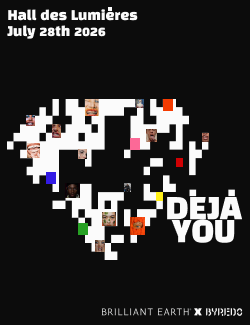
How can we create a feeling of déjà vu in exhibitions?
This work examines the relationship between familiarity and novelty, particularly when content remains constant while contextual elements shift. By designing environments that invite and support this natural process of rediscovery, visitors bring new perspectives, experiences, and emotional states to each encounter.
Taking advantage of the full arc of the experience, designers ensure repeat visitation through visitor co-production and layered experiences before, during, and after the visit. Through repeated participation and reflection, visitors add new meaning to the familiar, slowly unfolding deeper understanding and transforming repetition into revelation.
Client: Byredo & Brilliant Earth
Venue: Hall Des Lumières
Audience: Identity-seeking millennials and gen Z (24–40) / LGBTQ+ individuals and cultural re-definers /traditional luxury consumers
Soumya Kalhan
Thesis and Project

In an age where museums, brands, and institutions are saturated with storytelling, audiences crave experiences that move beyond narration to genuine emotional connection. The opportunity lies in designing exhibitions that prioritize storyfeeling, the intentional crafting of emotional architecture through multisensory, memory-driven, and ethically grounded design. By integrating sound, touch, light, and nostalgia as tools for empathy, exhibition design can bridge intellect and emotion, allowing visitors not just to learn stories but to feel them. When applied, this approach transforms exhibitions into catalysts for emotional reflection, deeper engagement, and collective healing in an increasingly disconnected world.
Client: Spotify
Venue: Lavan, Midtown, New York
Audience: Adults drawn to personalized, emotional experiences, exploring music
Sujin Hwang
Thesis and Project
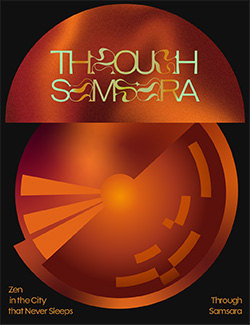
In contemporary New York, “Zen” is often reduced to a consumable image of tranquility,
stripped of its essence in meditation apps, minimalist interiors, and wellness brands.
Yet, Zen originally embodied harmony with nature, impermanence, and sensory stillness
as a philosophy that cultivated sensitivity to existence.
Exhibition and experience designers can reclaim and reinterpret Zen beyond its commercial
appropriation by translating its material and sensorial dimensions into spatial experiences.
These exhibitions aim to foster contemplative encounters rather than aesthetic consumption,
reimagining the essence of Zen as a new urban mode of being—demonstrating how design
can serve as a framework for its renewal.
Client:: Bloomberg Philantropies
Venue: 60 Wall Street Atrium, NYC
Audience: New York workers
Sunny Lo
Thesis and Project
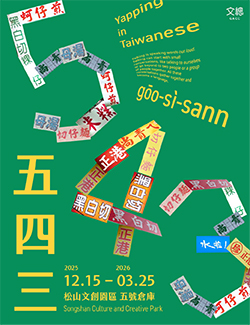
Language is not just a tool for communication. It shapes personal and collective memory, defining “who I am” and “who we are.” When a language disappears, what is lost is not only pronunciation, but also the identity, cultural, and historical roots it carries.
In the past, language suppression has occurred, and today, under the influence of broader societal forces, many heritage languages have gradually faded. Our mother tongue is more than a means of speech—it is a bridge to cultural memory and an essential part of self-identity.
While people come from different experiences and backgrounds, emotion remains a shared and universal language, the most instinctive form of human expression. By recognizing this, exhibition design can transform emotional experiences into pathways that help people reconnect with their heritage language and cultural identity.
Client: The General Association of Chinese Culture (中華文化總會)
Venue: Songshan Culture and Creative Park, Warehouse No.5, Taipei, Taiwan
Audience: Taiwanese people: Millennials(29–45) / college students (18–24) / children (6–12)
Sven Johnson
Thesis and Project
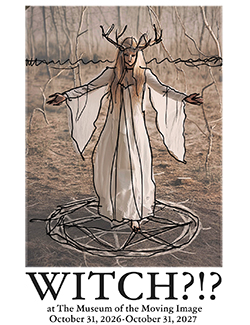
In contemporary culture, the popular figure of the “Witch” is the subject of endless fascination. It has evolved into a powerful cultural icon, with numerous overlapping and divergent meanings that speak to the way that identity is assigned in America today. It lies at the very heart of competing forces in politics, religion, and gender roles, a struggle which is amplified and projected by emerging forms of mass media, entertainment, and connection.
In the field of Sociology, “Frame Analysis Theory” is a tool to help understand how both individuals and society at large interpret and give meaning to such icons. It reveals how social context shapes meaning. In this view, the identity of a witch is not fixed but is framed differently depending on historical, cultural, and situational cues. And it is perfectly correlated to the exhibition design strategy of “immersion,” a technique that depends on context as a primary storytelling attribute.
A series of experiential, immersive spaces can thus be sequenced to juxtapose and foster a deeper understanding of varied and sometimes competing realities. In a journey through extremes, a larger appreciation of multiple perspectives and the ongoing struggle over meaning emerges. This empowers Exhibition Designers to simulate complex cultural phenomena, and help audiences arrive to a deeper, more meaningful understanding during their experience
Client: Ellevest Private Wealth Management NYC
Venue: Museum of the Moving Image, Astoria Queens
Audience: Primary: Women of all ages interested in the Icon of the "Witch."
Secondary: Young adults, teens and millennials interested in immersive experiences.
Tertiary: Art-tech and culture enthusiasts
Tanishka Samant
Thesis and Project
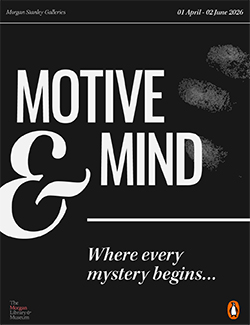
Contemporary exhibition and experience design increasingly rely on digital forms of engagement that often result in passive audience participation. There is a growing need for strategies that foster deeper, more emotionally meaningful connections between visitors and narratives, as well as approaches that engage the body, senses, and shared space, rather than relying solely on visual or informational stimuli.
Folk theatre traditions provide a valuable precedent for creating such engagement. These traditions have long cultivated participatory, culturally embedded, and emotionally resonant experiences through practices such as spatial storytelling and dynamic audience–character relationships. This study identifies adaptable techniques from folk theatre traditions that can enhance the experiential and narrative depth of contemporary exhibitions.
Client: Penguin Random House
Venue: The Morgan Stanley Galleries at the Morgan Library and Museum
Audience: Lovers of murder mystery fiction and true crime, mystery enthusiasts